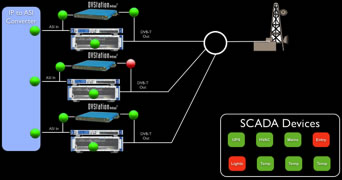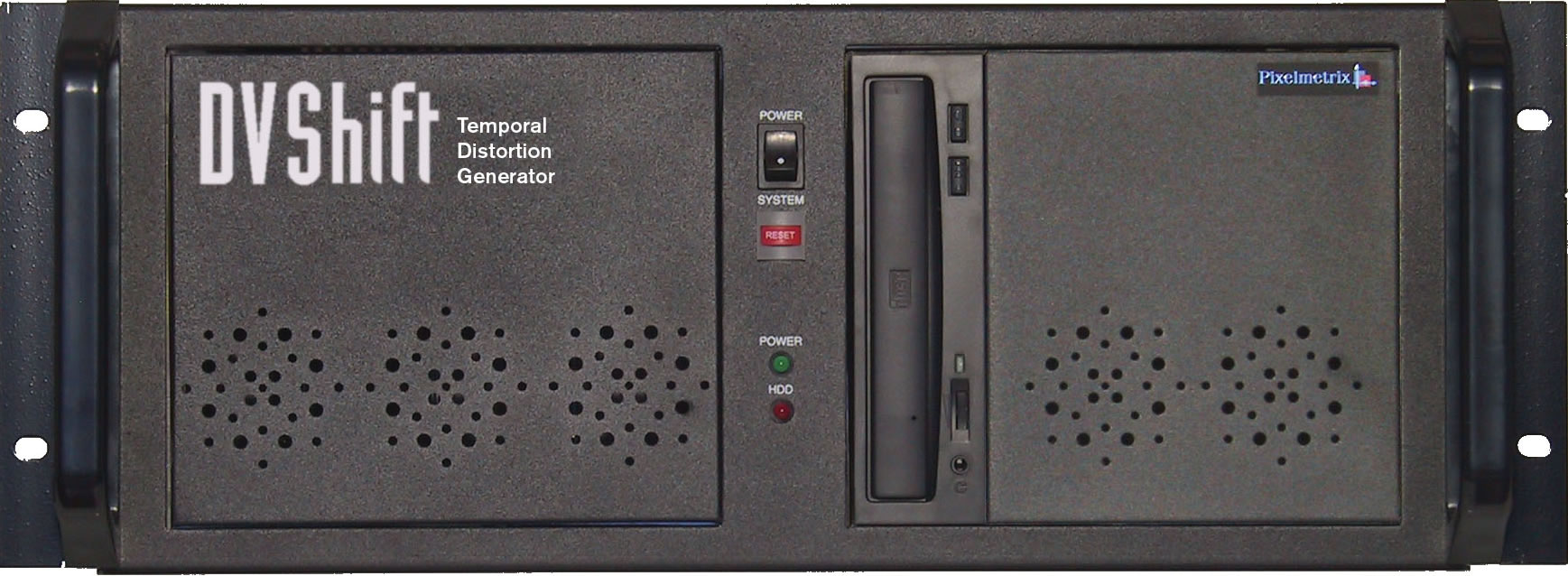Sensor Newsletter January 2011
|
||||||||||||||||||||||||||||||||||||||||||||||||||||||||||||||||||||||||||||||||||||||||||||||||||||||||||||
To deliver the best viewer experience for the audience, television operators must minimize end-user problems. However, with an increasing number of alarms scattered across regions, network monitoring is more complex than ever before, especially true for chasing configuration and fault issues in a system that is large, deep and complex. |
||
Fortunately, an SNMP-managed network can empower operators to consolidate all fault issues at one central site. SNMP, short for Simple Network Monitoring Protocol, is the common protocol of remote network monitoring and configuration that enables SNMP managers to communicate with agents running on network devices from multiple vendors. |
 |
|
To acquire information from an SNMP agent, the SNMP manager employs three commands: 1. Get – obtains data from agents on SNMP devices 2. Set – changes the values of variables stored within the device and return the data to the agents 3. Trap – reports parameters on unsolicited events, such as in cases of failures, that occur on the SNMP device. These unsolicited notifications are known as SNMP traps. What defines all these data in the SNMP-compliant devices is a specific text file called Management Information Base (MIB), which is a group of management objects shared between the NMS and the network element. The MIB assigns readable labels to Object Identifiers (OID) so that the manager can decode SNMP messages into readable forms. The main advantage of using SNMP is that as a standard for data delivery, SNMP reduces the complexity of managing different types of devices. In a real-time environment like broadcasting that demands constant monitoring, it is of vital importance to use tightly integrated devices in order to detect failures instantly. An SNMP-managed network allows operators to pinpoint the fault quickly at the precise location and dispatch the engineers right away to repair or replace the failed module. Other advantages of an SNMP-managed network monitoring system include clear presentations of data with an intuitive graphical display; a comprehensive bitmap view of broadcast operation status allows operators to check the status of devices located anywhere in the world. Moreover, an SNMP-managed monitoring system can be configured to send notifications (email/SMS/pager) throughout the day in real time. SNMP makes real time monitoring and reporting simple and effective from the macro-level to the microscopic display of errors. For large broadcasting facilities with a multitude of network devices, SNMP is an indispensable component for consolidating all layers of errors. |
||
|
|
||
| Monitoring Line Up | ||||||
The DVStation is a single self-contained monitoring station that can analyze thousands of parameters within hundreds of digital television signals. Though |
The DVShift is ideal for delayed rebroadcast across time zones and provides stable, user-programmable delays from seconds to days. It is a great |
|||||
the use of plug-in modules and parallel processing, it can monitor all these parameters real-time, simultaneously and continuously.
|
improvement over the conventional approach of utilizing separate audio/video delay equipment which simply does not work with the advent of multi-channel audio, multiple subtitles or closed captioning, and especially so with multimedia content such as MHP. |
|||||
The DVStor2 is an ASI/IP self-contained, recording and playback system. In addition to the standard Record and Playback functions, the new Delay feature makes it perfect for Disaster |
The DVStation-Pod is a low-cost tool that can analyze and troubleshoot digital broadcast signals. Lightweight and portable, it easily slips into a tool case. DVStation-Pod borrows most of the advanced features of the DVStation, |
|||||
Recovery or Network Delay. It also offers one of the highest storage densities in the industry. RAID-6 and redundant power supplies further protect archived content. |
||||||
The DVStation-Remote is a compact version of the flagship DVStation, ideal for smaller-sized facilities. Consisting of one to four book-sized Pod modules and a single 1U rack-mounted Remote Controller, the system is operated through a LAN or dial up telephone, allowing database or user access from a personal computer. |
including its extraordinary user-friendly interface, on-board transport stream capture, internal playback and analysis, as well as error and measurement logging. |
|||||
|
The DVStation-Mini2 provides a compact and cost-effective way for terrestrial, cable and satellite operators to maintain visibility of network quality and performance. It offers comprehensive TS |
|||||
The DVProbe-S2 is a future-proof monitoring solution for satellite networks, while the DVProbe-C is developed for CATV networks. It connects directly to the QAM RF cable network. |
monitoring and is optimized for remote site deployment. |  |
||||
| IPTV Monitoring Solutions | ||||||
The DVStation-IP3 offers a one-stop monitoring engine for IP and Transport Stream Analysis, detailed service visualization and IP Headend Output verification for IPTV networks. It provides, on all services, MPEG-2 and H.264 main profile thumbnails, Media De-
livery Index (MDI) which allows packet loss and jitter measurements as well as video presence, freeze or blackout displays. |
The DVStorIP-Gen is a high-performance, cost-effective tool for the evaluation, compliance testing and verification of networks, monitoring and equipment analysis. |
|||||
The Electronic Couch Potato (ECP) TM is a “programmable test |
||||||
robot” deployed after the STB. It uses a built-in IR controller and analyzes the decoded signal to fully and truly evaluate the report the end users’ experience for delivered video services. |
||||||
| Top |




